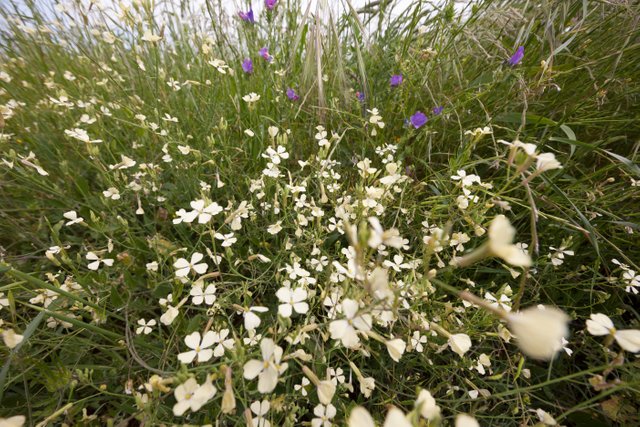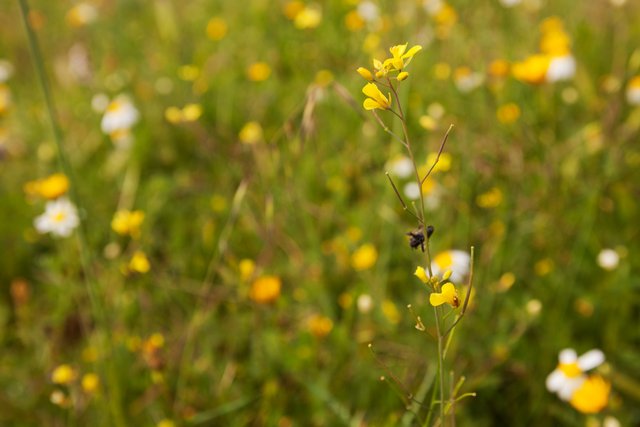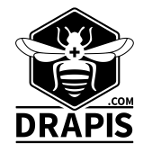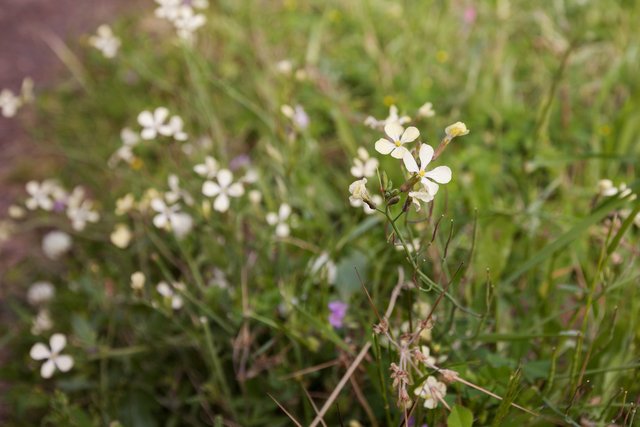Raphanus raphanistrum
Part of our Alentejo's wildflower collection. The rununculus, or wild radish also known as white charlock or jointed charlock, is a flowering plant in the family Brassicaceae. It is sometimes claimed to be the ancestor of the edible radish, Raphanus sativus. Native to western Asia, Europe and parts of Northern Africa. It has been introduced into most parts of the world, and is regarded as an habitat threatening invasive species in many areas, for example Australia. It spreads rapidly, and is often found growing on roadsides or in other places where the ground has been disturbed.

Wild radish grows as an annual or biennial plant, with a single taproot which is similar to that of the cultivated radish but less enlarged. It has basal leaves that are oblong-elliptic to spatula-shaped, the stem leaves are shorter and lobed. It has hairy stems and can grow up to between 20–60 mm (0.79–2.36 in) tall. It blooms between May and September, in the UK, or between June and August, in the US. The flowers very similar to those of the searocket, which is found in some of the same regions (in the US) and is easily distinguished from it by having thinner, non-succulent stems and leaves. The stems have wide spaced, four-petalled flowers 30–40 mm (1.2–1.6 in) across and varying in colour, usually from white to purple but sometimes light orange to yellow, often with colour shading within a single petal. Later, on a short stalk, it produces a podded seed capsule. Up to 8 round jointed pods, each containing one round or oval seed.

Raddish honey isn't as spicy as the plant, it has a sweet-yet-light flavor, with a little bit astrigency. Radishes are pollinated for the seed crops. Studies have shown that honeybees are responsible for roughly 85% of radish pollination, and produce a 22% increase in the seed crop.
Get a glimpse of Dr. Apis bee's entourage in the following videos:
A quick overview of the local wildflowers. The nectar, pollen and resin sources.
The amazing wildflower blooming fields harvested by our bees. Where all the nectar of our honey is harvested.
Take a closer look to our bees and beehives.
All pictures and videos produced by @drapis, in Alentejo, Portugal, during May 2018.
Some of our bee's sources of
nectar, pollen and resin in Alentejo, Portugal include:
Cirsium vulgare
Cistus ladanifer
Lavandula stoechas
Trifolium nigrescens
Quercus suber

www.drapis.com
@drapis
Twitter @drapiscom // Facebook @drapiscom // Instagram @dr.apis
